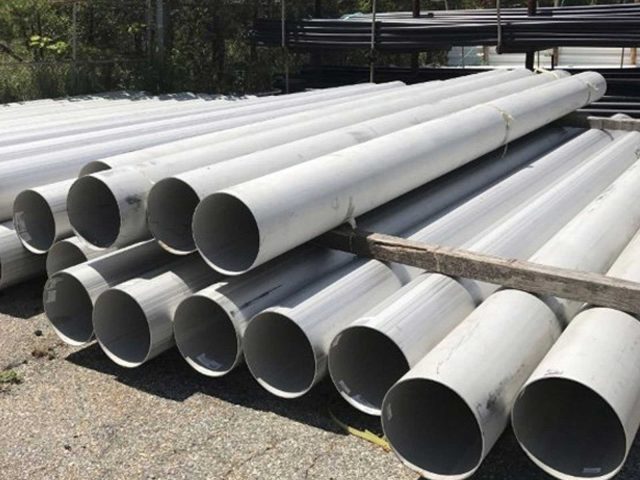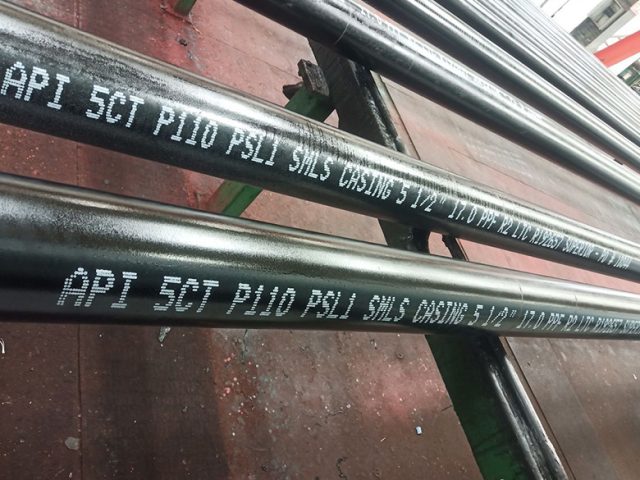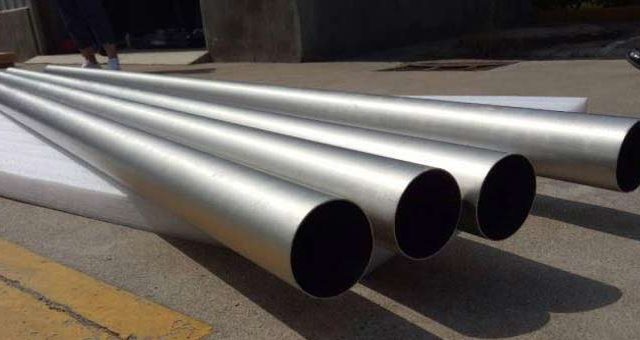ASME SA249 TP316L Stainless Steel Boiler Pipe
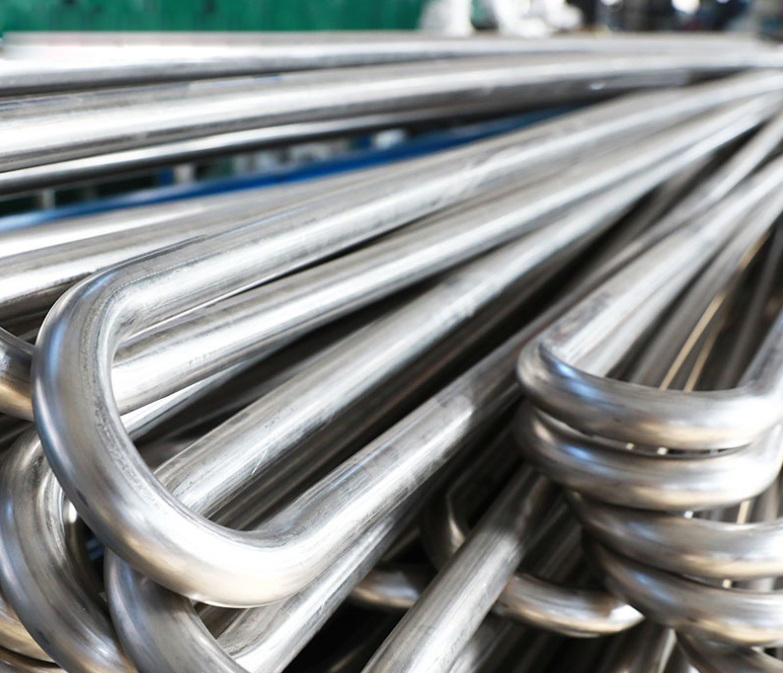
ASME SA249 TP316L Stainless Steel Boiler Pipe: A Reliable Choice for High-Temperature Applications
Table of Contents:
- Introduction
- Understanding ASME SA249 TP316L Stainless Steel Boiler Pipe
- Properties and Benefits of ASME SA249 TP316L Stainless Steel Boiler Pipe
- Applications of ASME SA249 TP316L Stainless Steel Boiler Pipe
- FAQ
- Conclusion
1. Introduction
In the world of industrial applications, boiler pipes play a crucial role in ensuring the smooth operation of various systems. Whether it’s power generation, heating, or industrial processes, the choice of the right boiler pipe material is essential to withstand high temperatures and harsh environments. One such reliable choice is the ASME SA249 TP316L Stainless Steel Boiler Pipe. In this comprehensive article, we will delve into the details of this exceptional material, exploring its properties, benefits, applications, and more.
2. Understanding ASME SA249 TP316L Stainless Steel Boiler Pipe
ASME SA249 TP316L is a specification for welded austenitic steel boiler, superheater, heat-exchanger, and condenser tubes. It is a low carbon version of TP316 stainless steel, which exhibits excellent corrosion resistance and superior mechanical properties. The “L” in TP316L stands for “low carbon,” making it suitable for applications where welding is required.
The manufacturing process of ASME SA249 TP316L Stainless Steel Boiler Pipe involves rolling and welding austenitic stainless steel strip or plate into tube form. This results in a seamless and robust pipe that can withstand high pressure, extreme temperatures, and corrosive environments. It is worth mentioning that TP316L is also known for its exceptional creep and stress rupture properties, making it ideal for long-term applications.
3. Properties and Benefits of ASME SA249 TP316L Stainless Steel Boiler Pipe
Properties of ASME SA249 TP316L Stainless Steel Boiler Pipe
- Corrosion Resistance: One of the standout properties of TP316L stainless steel is its excellent resistance to corrosion. It has a high chromium content, which forms a protective oxide layer on the surface, preventing corrosion and degradation in harsh environments.
- High Temperature Strength: ASME SA249 TP316L exhibits remarkable strength and stability at elevated temperatures. It retains its mechanical properties even under extreme heat, making it suitable for boiler and heat exchanger applications.
- Low Carbon Content: The low carbon content in TP316L stainless steel minimizes carbide precipitation during welding, reducing the risk of intergranular corrosion. This enhances the material’s weldability and ensures long-term structural integrity.
Benefits of ASME SA249 TP316L Stainless Steel Boiler Pipe
- Reliability: TP316L stainless steel is a highly reliable material for boiler pipes, thanks to its exceptional corrosion resistance and high-temperature strength. It can withstand the demanding conditions of various industrial applications, ensuring reliable and uninterrupted operation.
- Longevity: The longevity of ASME SA249 TP316L Stainless Steel Boiler Pipe is a result of its superior resistance to corrosion, oxidation, and high-temperature environments. This translates to extended service life and reduced maintenance costs.
- Versatility: TP316L stainless steel offers versatility in application. It can be used in a wide range of industries, including power generation, petrochemical, chemical processing, food and beverage, pharmaceutical, and more. Its compatibility with different fluids and gases further expands its utility.
4. Applications of ASME SA249 TP316L Stainless Steel Boiler Pipe
Power Generation
ASME SA249 TP316L Stainless Steel Boiler Pipe finds extensive use in power generation plants, where it serves as the primary material for boiler tubes. The high-temperature strength and corrosion resistance of TP316L make it an ideal choice for carrying superheated steam in power generation processes.
Petrochemical Industry
In the petrochemical industry, ASME SA249 TP316L Stainless Steel Boiler Pipe is utilized for various applications, including heat exchangers, condensers, and process piping. Its resistance to corrosive chemicals and high temperatures makes it suitable for handling aggressive fluids and gases.
Food and Beverage Industry
The food and beverage industry requires materials that are hygienic, corrosion-resistant, and compliant with strict regulatory standards. ASME SA249 TP316L Stainless Steel Boiler Pipe fits the bill perfectly, as it meets these criteria and ensures the integrity and safety of food and beverage processing systems.
Pharmaceutical Industry
Similar to the food and beverage industry, the pharmaceutical sector demands materials that meet stringent hygiene standards. ASME SA249 TP316L Stainless Steel Boiler Pipe is widely used in pharmaceutical manufacturing processes, such as sterilization, purification, and distribution systems, thanks to its exceptional corrosion resistance and cleanability.
Chemical Processing
Chemical processing plants often involve the handling and transportation of corrosivechemicals at high temperatures. ASME SA249 TP316L Stainless Steel Boiler Pipe is an excellent choice for such applications due to its superior corrosion resistance and high-temperature strength. It ensures the integrity and safety of chemical processing systems, minimizing the risk of leaks or failures.
5. FAQ
Q1: What is the difference between TP316 and TP316L stainless steel?
TP316 and TP316L stainless steel are both austenitic stainless steels with similar composition and properties. The main difference lies in the carbon content. TP316L contains a lower carbon content, which enhances its weldability and reduces the risk of intergranular corrosion.
Q2: Is ASME SA249 TP316L Stainless Steel Boiler Pipe suitable for high-pressure applications?
Yes, ASME SA249 TP316L Stainless Steel Boiler Pipe is designed to withstand high pressure. It is commonly used in boiler and heat exchanger systems where high-pressure steam or fluids are present.
Q3: Can ASME SA249 TP316L Stainless Steel Boiler Pipe be used in corrosive environments?
Absolutely! TP316L stainless steel is highly resistant to corrosion, making it suitable for use in corrosive environments. It forms a protective oxide layer on the surface, which shields the underlying material from corrosion.
Q4: Does ASME SA249 TP316L Stainless Steel Boiler Pipe require any special welding techniques?
While TP316L stainless steel is generally easy to weld, it is essential to follow proper welding procedures to maintain its corrosion resistance and mechanical properties. Using appropriate filler materials and controlling heat input are crucial for successful welds.
Q5: Can ASME SA249 TP316L Stainless Steel Boiler Pipe withstand high temperatures?
Yes, ASME SA249 TP316L Stainless Steel Boiler Pipe exhibits excellent high-temperature strength. It retains its mechanical properties even at elevated temperatures, making it suitable for applications such as boiler tubes and heat exchangers.
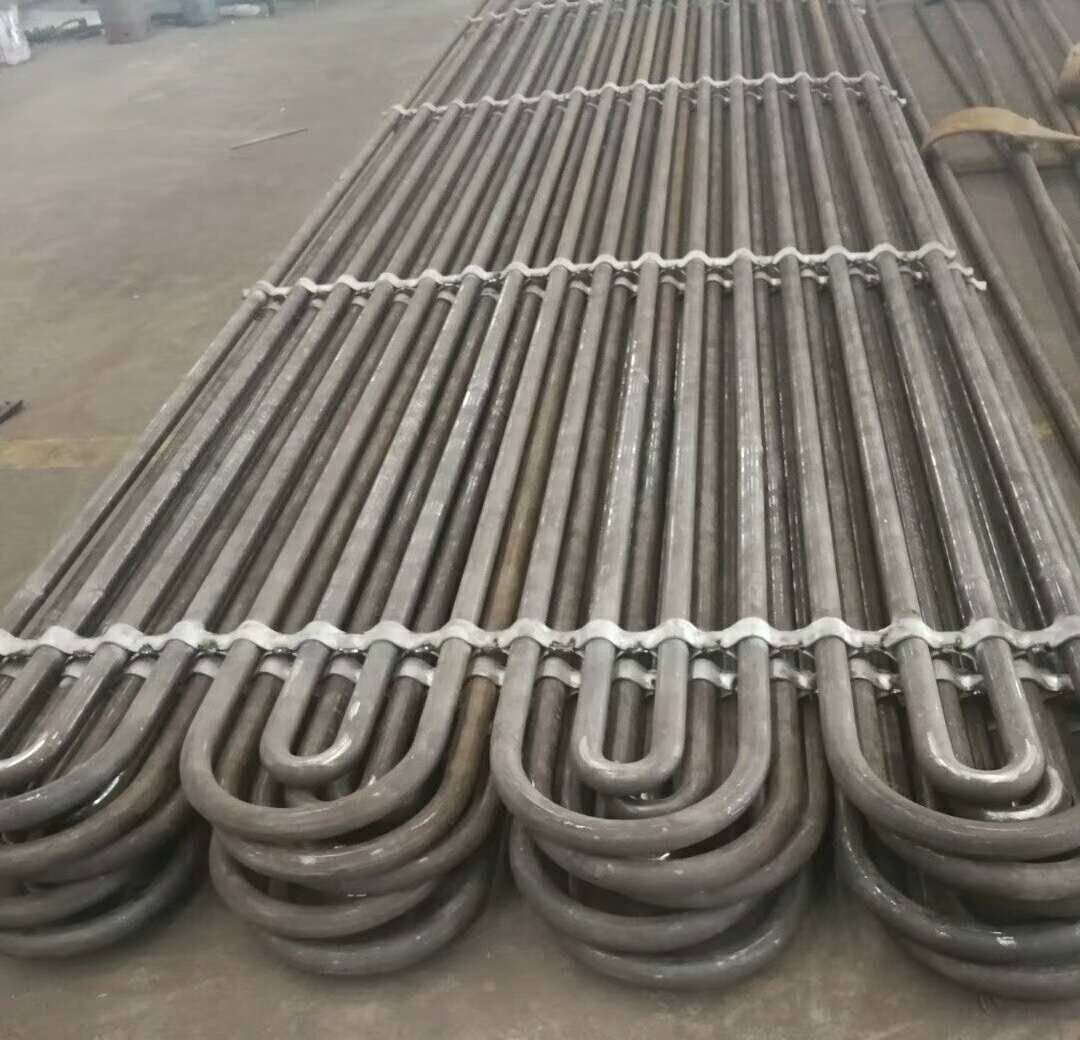
ASME SA249 TP316L Stainless Steel Boiler Pipe: Mechanical Properties, Manufacturing Process, Chemical Composition
In this section, we will explore the mechanical properties, manufacturing process, and chemical composition of ASME SA249 TP316L Stainless Steel Boiler Pipe. Understanding these aspects is crucial for evaluating the performance and suitability of the material for various industrial applications.
Mechanical Properties
The mechanical properties of ASME SA249 TP316L Stainless Steel Boiler Pipe determine its strength, durability, and ability to withstand high temperatures and pressures. Here are the key mechanical properties of TP316L stainless steel:
- Tensile Strength: The tensile strength of TP316L stainless steel is a measure of its resistance to breaking under tension. It has a minimum tensile strength of 515 MPa (75,000 psi).
- Yield Strength: The yield strength is the maximum stress a material can withstand before it starts to deform permanently. TP316L stainless steel has a minimum yield strength of 205 MPa (30,000 psi).
- Elongation: Elongation is the measure of a material’s ability to stretch or deform before it breaks. TP316L stainless steel has a minimum elongation of 35%.
- Hardness: The hardness of TP316L stainless steel is typically measured using the Rockwell hardness scale. It has a maximum hardness of 217 HB.
- Impact Toughness: TP316L stainless steel exhibits excellent impact toughness, which refers to its ability to absorb energy under impact loading without fracturing. This property is crucial for applications that may experience sudden impact or shock loads.
Manufacturing Process
The manufacturing process of ASME SA249 TP316L Stainless Steel Boiler Pipe involves several steps, ensuring the production of high-quality pipes with consistent properties. Here is an overview of the manufacturing process:
- Raw Material Selection: The process begins with the selection of high-quality stainless steel strip or plate with the appropriate chemical composition and mechanical properties.
- Strip/Plate Preparation: The selected stainless steel strip or plate is then prepared by cleaning, descaling, and removing any impurities or surface contaminants.
- Forming: The prepared strip or plate is fed into a tube mill, where it undergoes continuous roll forming to transform it into a cylindrical shape. This process ensures a seamless structure without any welded seams.
- Welding: The formed tube is then welded longitudinally using the Tungsten Inert Gas (TIG) welding process. TIG welding ensures a strong and durable joint, maintaining the corrosion resistance and mechanical properties of the material.
- Heat Treatment: After welding, the TP316L stainless steel boiler pipe undergoes a heat treatment process to relieve any residual stresses and improve its mechanical properties. This process enhances the material’s toughness and ductility.
- Finishing: The final step involves finishing processes such as sizing, straightening, and polishing to achieve the desired dimensions, surface finish, and overall appearance of the TP316L stainless steel boiler pipe.
Chemical Composition
The chemical composition of ASME SA249 TP316L Stainless Steel Boiler Pipe plays a vital role in determining its corrosion resistance, mechanical properties, and overall performance. Here is the typical chemical composition of TP316L stainless steel:
- Carbon (C): 0.035% maximum
- Manganese (Mn): 2.00% maximum
- Phosphorus (P): 0.045% maximum
- Sulfur (S): 0.030% maximum
- Silicon (Si): 0.75% maximum
- Chromium (Cr): 16.0-18.0%
- Nickel (Ni): 10.0-14.0%
- Molybdenum (Mo): 2.00-3.00%
- Iron (Fe): Balance
The low carbon content of TP316L stainless steel minimizes carbide precipitation during welding, reducing the risk of intergranular corrosion. The addition of chromium, nickel, and molybdenum enhances the material’s corrosion resistance and high-temperature strength.
It is important to note that variations in the chemical composition may exist depending on the specific manufacturer and production standards. However, the composition mentioned above represents the typical range for TP316L stainless steel.
In conclusion, ASME SA249 TP316L Stainless Steel Boiler Pipe possesses excellent mechanical properties, including high tensile and yield strength, elongation, and impact toughness. The manufacturing process ensures a seamless and robust structure, while the chemical composition provides superior corrosion resistance and high-temperature stability. These attributes make TP316L stainless steel a reliable choice for boiler pipe applications in various industries.
“The Complete Guide to ASME SA249 TP316L Stainless Steel Boiler Pipe: Properties, Applications, and Maintenance”
“Exploring the Versatility and Durability of ASME SA249 TP316L Stainless Steel Boiler Pipe”
“Everything You Need to Know About ASME SA249 TP316L Stainless Steel Boiler Pipe: A Comprehensive Overview”
“Unveiling the Benefits and Advantages of ASME SA249 TP316L Stainless Steel Boiler Pipe”
“ASME SA249 TP316L Stainless Steel Boiler Pipe: The Perfect Solution for High-Temperature Applications”
6. “Maximizing Efficiency and Performance with ASME SA249 TP316L Stainless Steel Boiler Pipe”
7. “Ensuring Reliability and Safety with ASME SA249 TP316L Stainless Steel Boiler Pipe”
8. “Advancing Industrial Processes with ASME SA249 TP316L Stainless Steel Boiler Pipe”
9. “A Closer Look at ASME SA249 TP316L Stainless Steel Boiler Pipe: Features and Applications”


